Amidst the urban sprawl of south Dallas, lies the Texas Discovery Gardens—a 7.5-acre refuge of native and adapted plants. Additionally, the complex houses a butterfly house and insectarium, replicas of historic buildings, and a snake and reptile shack.
The beloved gardens are located within one of the city’s main attractions, Fair Park, and are both a haven and an inspiration for visitors. Indeed, their vision attests to this. The organization says, “We want every visitor to leave with the knowledge and desire to emulate our sustainable practices at home.”
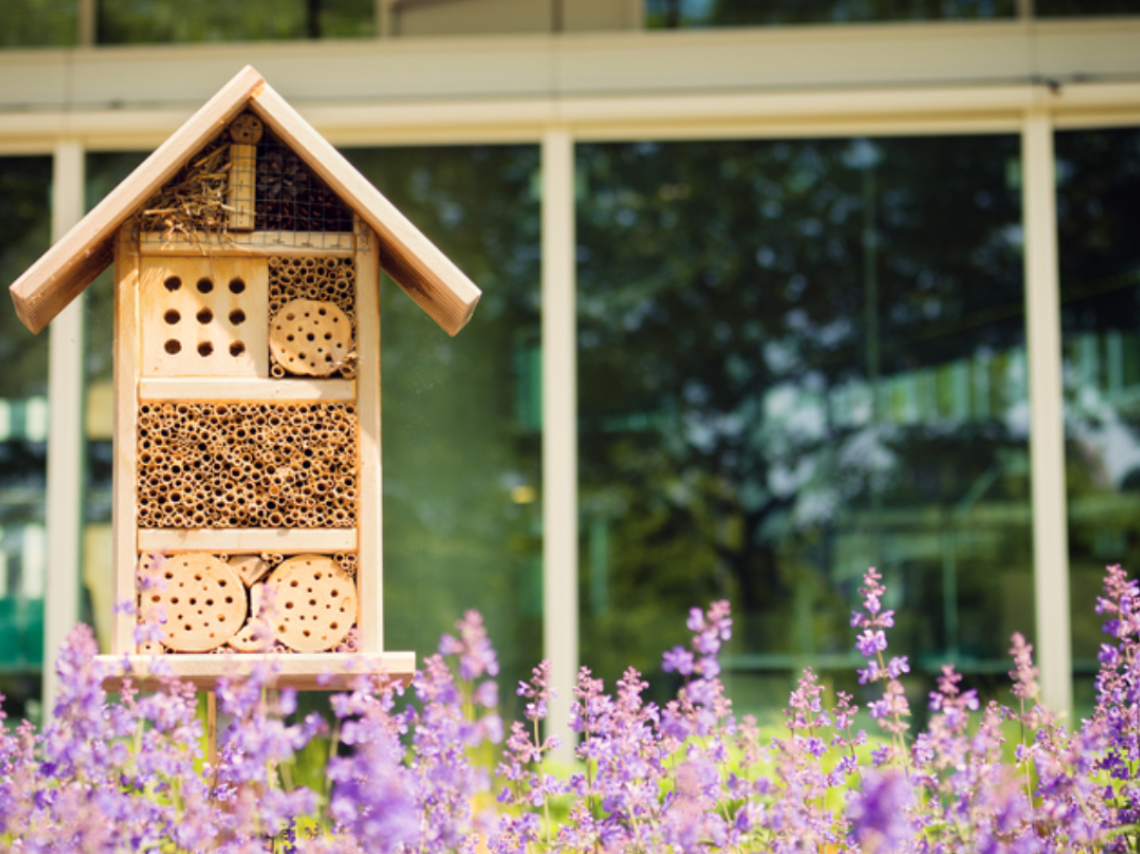
Bee house at Texas Discovery Gardens | Photo courtesy of Texas Discovery Gardens
While the gardens are maintained organically, over the past several decades, they have made the push to transition much of their landscape to native plants, which are not only designed to withstand the Texas heat and droughts of summer but are also prime host plants for native insects and pollinators, as well as habitat for birds.
Recently, Horticulture Director Kerry Gray-Harrison sat down with Kinute to discuss the methods and philosophy of Texas Discovery Gardens, as well as the importance of native plants everywhere.
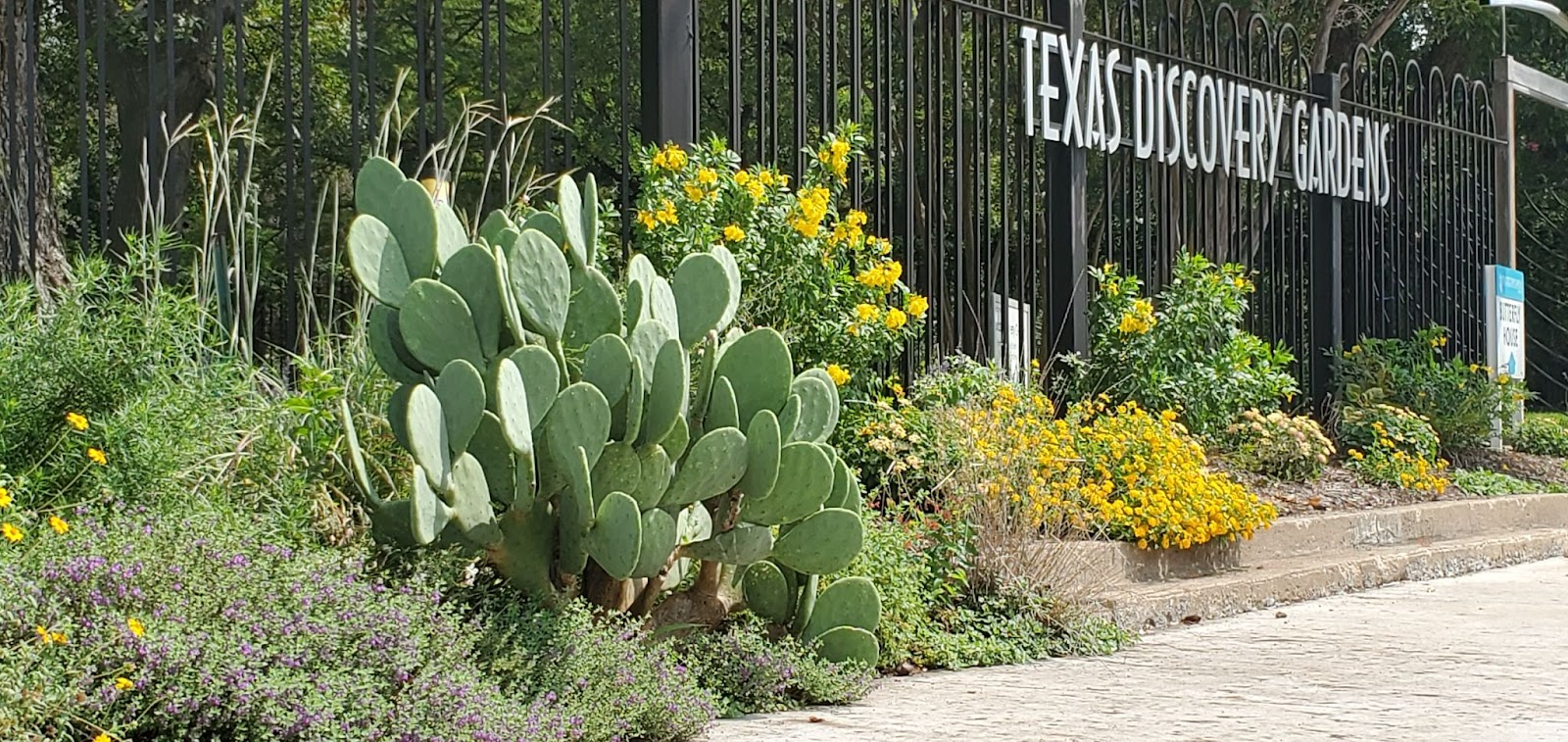
Gardens’ entrance planted with heat and drought tolerant plants | Photo by Kerry Gray-Harrison
Texas Discovery Gardens are the first in Texas to be organic, why is this important?
We focus on how important it is for our ecology. So, we talk more about working with nature, gardening with nature, gardening with our ecosystem, and about all our buddies in the soil and flying around. Of course, if you use pesticides, then you're killing all that cycle of life that you need to keep everything happy and healthy and balanced.
Now we're even going past organic and saying, how do we use other methods that help us to have a healthy garden.
Tell us about the approaches to weed and pest control, and fertilization?
Luckily our pests out on the ground are not much of a concern because we have a really balanced system of integrated pest management. Essentially, we just wait for the predators to come along and to eat them. So, we try to make sure that those predators have some nice healthy leaf litter and other things that they need to complete their life cycles.
We do a lot of weeding by hand. We have a lot of decomposed granite paths, and everything likes to root in there. When it gets out of control, we use concentrated vinegar or herbicidal soap that will break down really, quickly—it has to be high temperatures and full sun for that to really take effect. We have an enormous volunteer crew that helps us to keep them under control and it's kind of cyclical. We don't have a lot of weeds coming up in the middle of summer because here everything is just trying to stay alive. Our weeds are usually in the fall when it cools off or right now, in the spring when we get those wonderful rains and warmer temperatures.
We don't do too much fertilization. We really try to build up the health of the soil. We reuse our leaves and try to work that back in and that brings in the nutrients that we need.
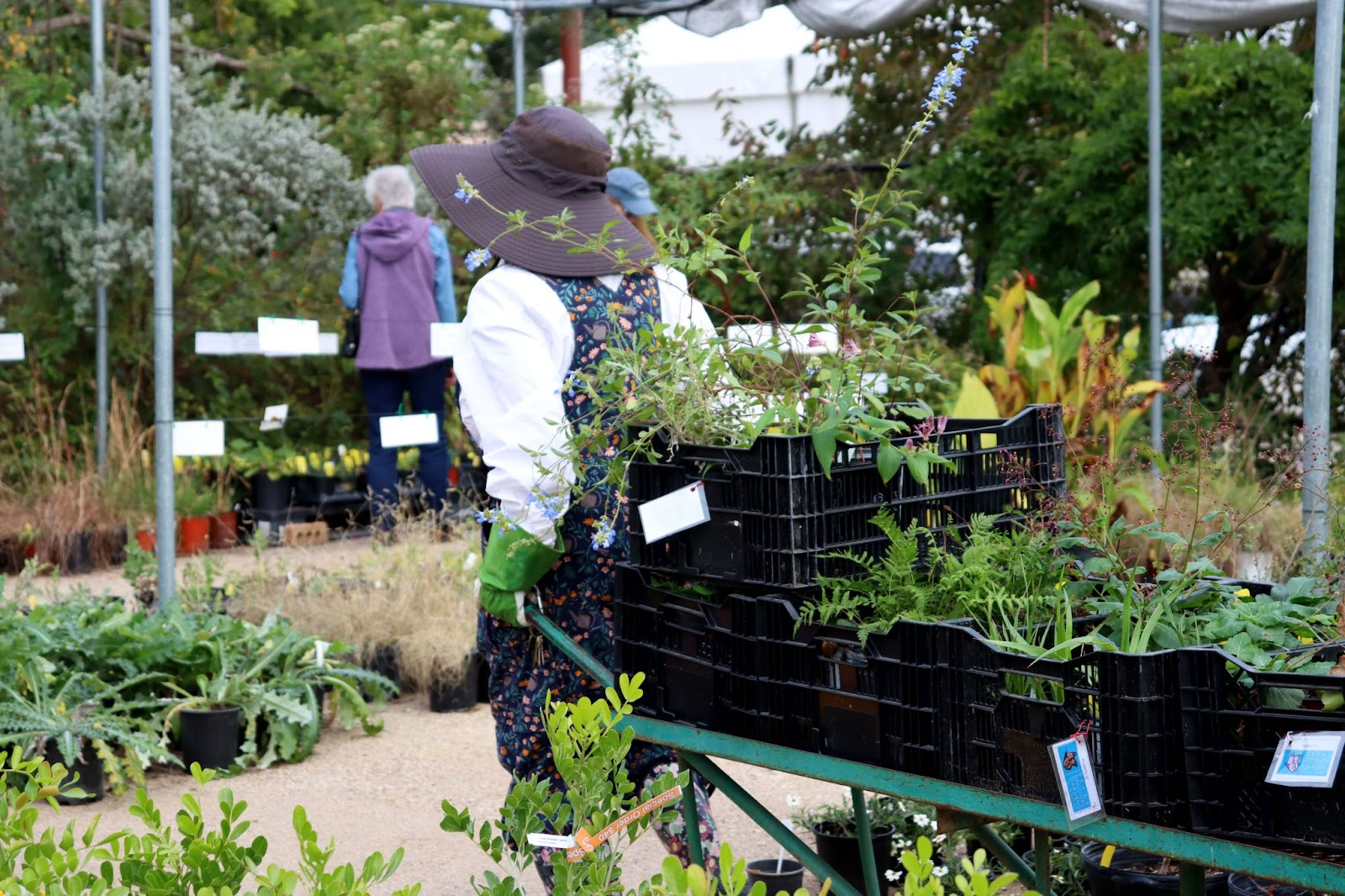
Volunteer hauling plants during pollinator plant sale | Photo by Sami Galloway
What water conservation methods are deployed?
Mostly we try to plant things that are going to survive. Here in this part of Texas, your best bet is to plant plants in the fall, especially trees and shrubs and any perennial. That way they have a nice long season through the fall and winter to develop those roots so that they're better able to survive the drought in the summer before the heat kicks in.
We've been able to cut back on irrigation. We used to irrigate a lot more, but in the last few years we've cut back to turning our systems on just twice a week—to keep things up for expectations, we still do have a lot of events. A lot of our plants would be fine without any supplemental irrigation at all. In some gardens we have taken out irrigation and just hand water as needed.
Why are native plants central to Texas Discovery Gardens?
Our native plants are the ones that get eaten by the caterpillars, so they're the most fun. Also, we're lucky enough to have an entomologist on staff, and we saw a beetle a couple of summers ago after we put in a small bioswale. That beetle was one that he had never seen before, and we found it kind of crawling around in that same area. So, that's not proof, but it's probably pretty likely that having that space there with some good quality native plants, is what attracted those critters to come lay eggs and feed and hopefully continue their life cycle.
So, it's that connection between the insects that are already here, also the birds, and all our wildlife, that's used to having those Blackland Prairie plants, and we're trying to have just a tiny spot in the middle of a bunch of parking lots in Dallas.
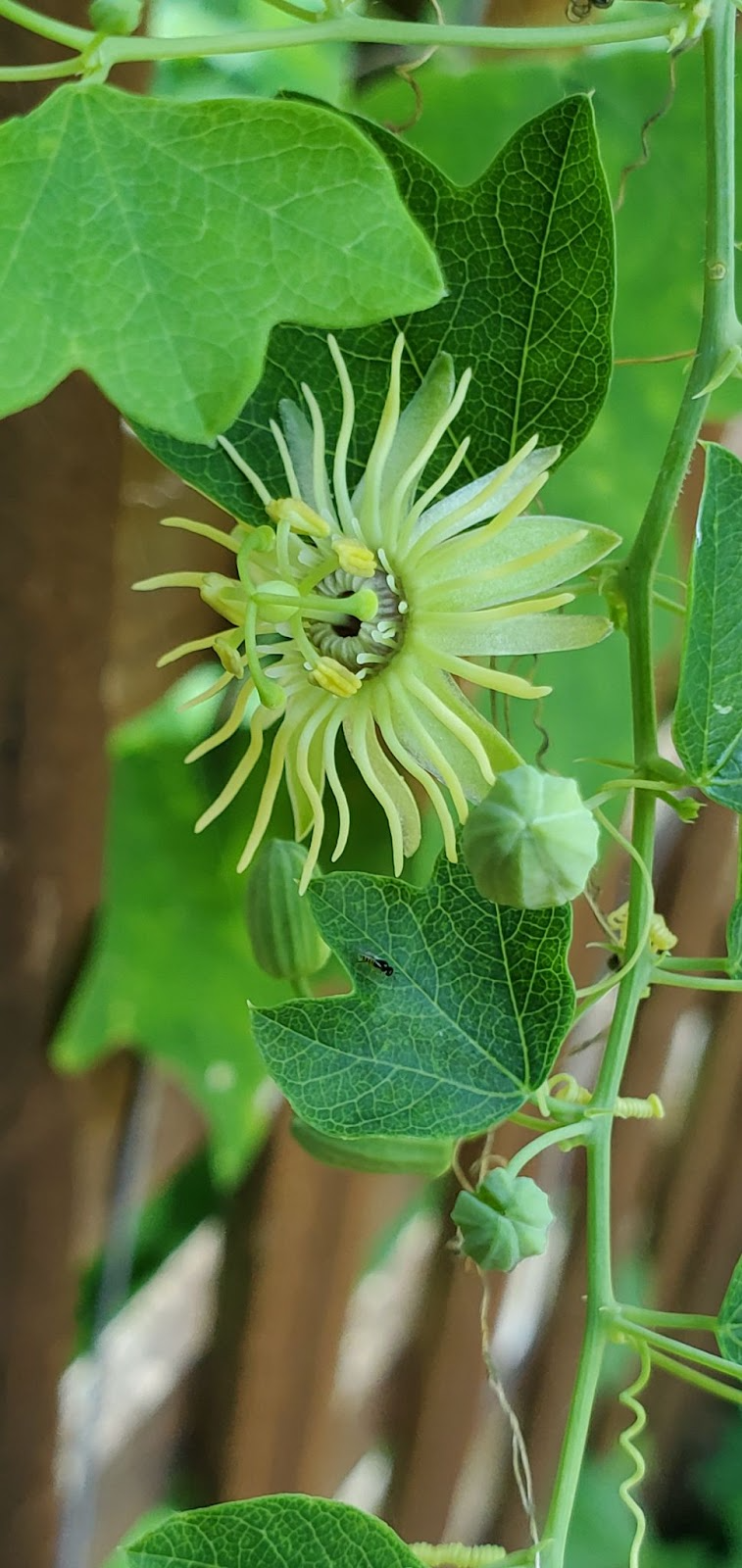
Native Passiflora lutea; Host plant for caterpillars of Gulf Fritillary and others | Photo by Kerry Gray-Harrison
Do you consider the garden to be a successful habitat, as it’s located within a densely urban area?
We see all kinds of birds and all kinds of arthropods here and we're just seven acres in the middle of…oceans of parking lots of Fair Park. My philosophy is every little bit counts.
We even have some of our repeat customers for our plant sales say: I got 10 plants at the last sale and then I was out in my front yard planting these plants and this butterfly landed on the plant right there, before I even planted it.
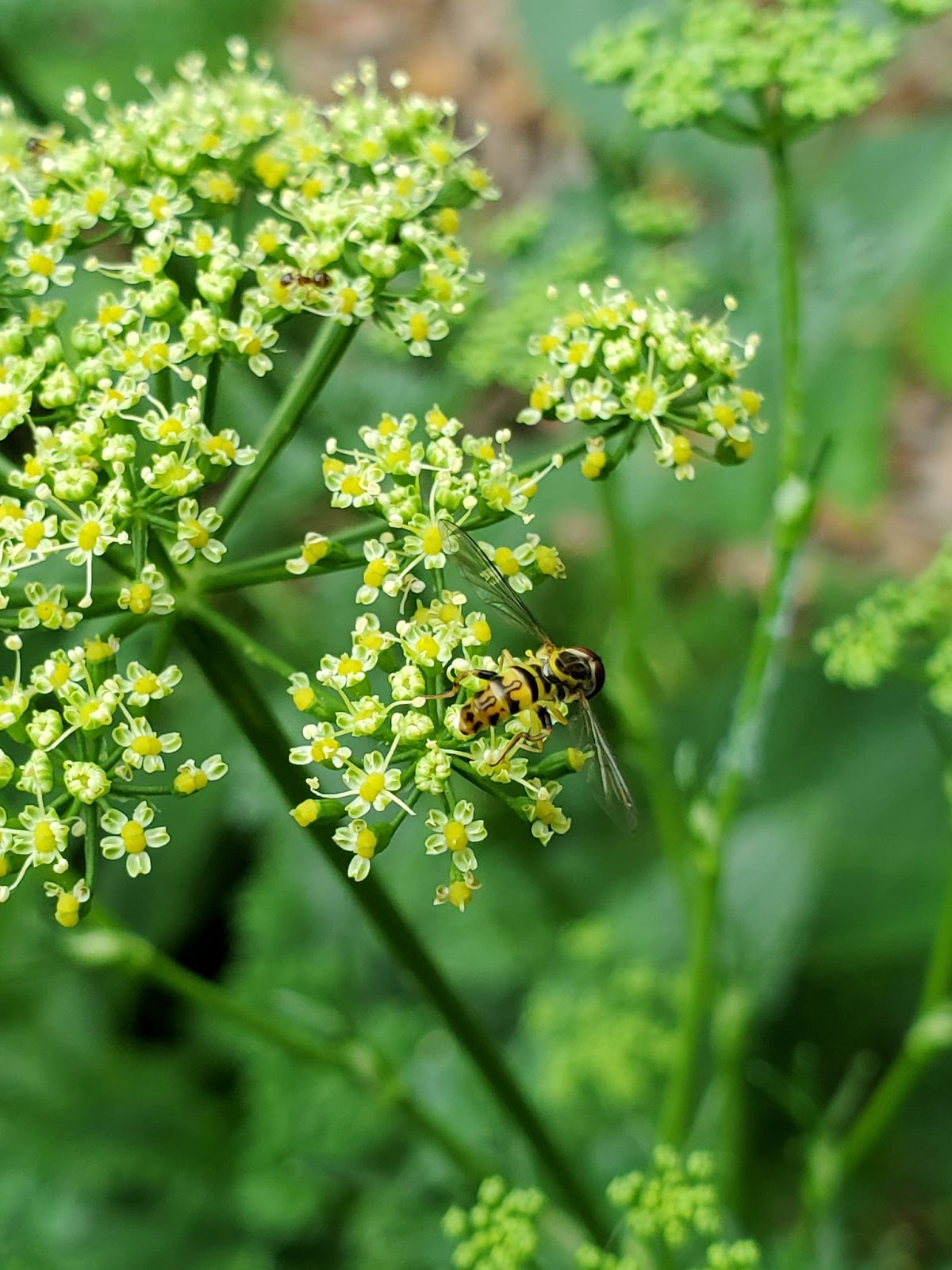
Hoverfly on native Texas Prairie Parsley | Photo by Kerry Gray-Harrison
Why are you personally passionate about native plants?
I was on a trip to Big Bend, in west Texas, and everything was so different there and I wanted to know what it was. I was just so curious, and I think seeing different plants is what made me curious about how those were different from where I grew up here in central Texas. I ended up getting a botany degree in Maine. The plants there, of course, were a lot different, and there's a lot less plant diversity along the East Coast too, way up there where it starts getting really cold. So that made me even more curious when I came back to Texas, to see what these plants are that I grew up with and never really paid attention to.
How do adapted plants play a role in the landscape?
We have a lot of butterflies that will lay eggs on our non-native pipevine. They love it and they'll eat it and keep coming back to the same place to reproduce. Also, some of the cultivars of native plants produce good quality nectar and good quality pollen that's able to feed our insects…If a gardener just wants to have flowers, it would be a little better to at least have some of those adapted plants and those native cultivars to get started…[with] something that at least provides some ecological benefit.
We aren't in a prairie right here in this garden and we aren't doing prairie restoration, so as long as something is able to be one of those producing plants—something eats it, or something needs it for habitat—then at least that's something that's contributing to our local ecosystem here in the middle of urban Dallas.
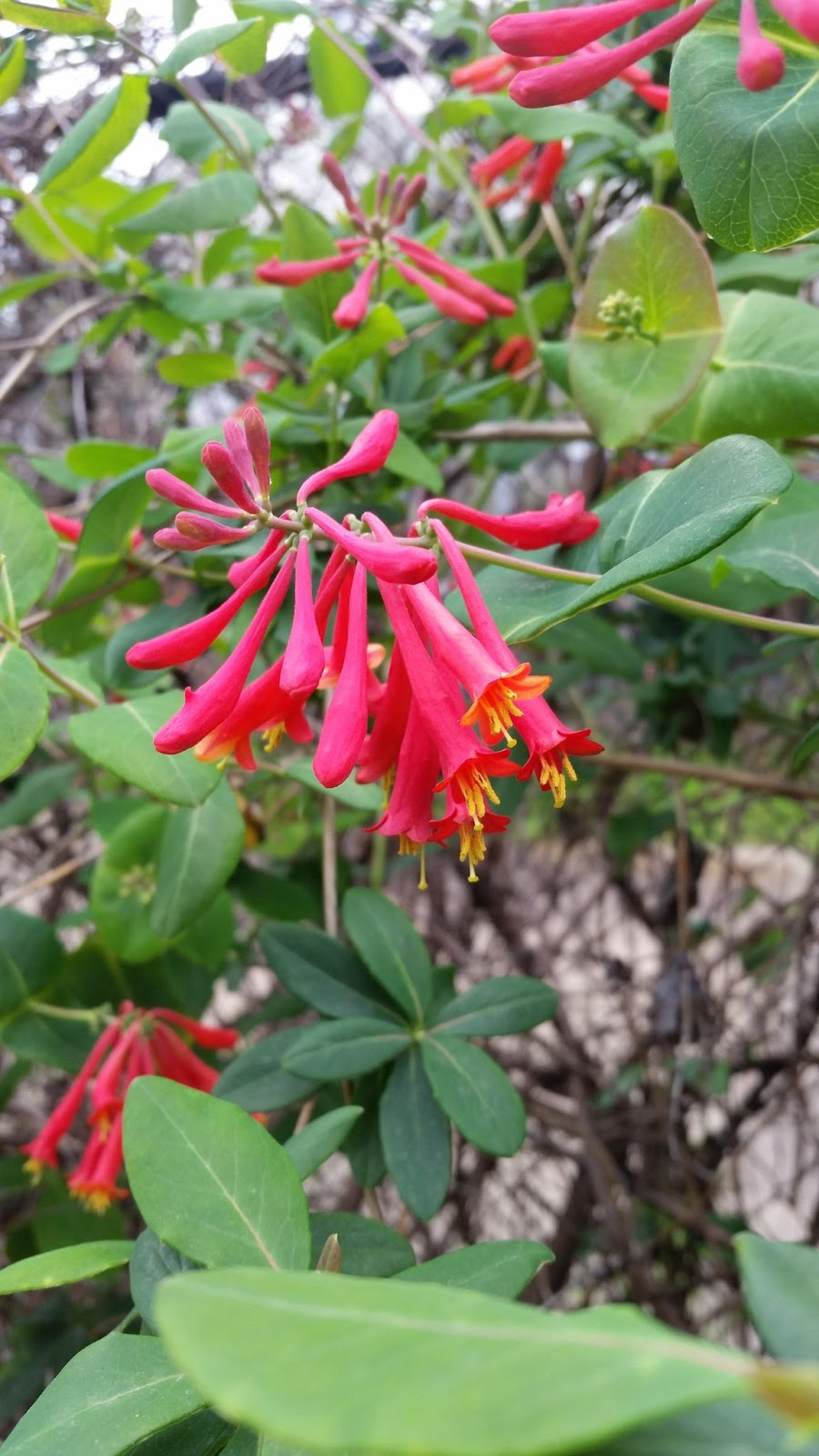
Coral Honeysuckle, blooms during hummingbird migration through the area | Photo by Kerry Gray-Harrison
Tell me about the goal of the native plant sale?
It's a fundraiser. It's also a great way for like minded people to volunteer with each other and then to share their knowledge with each other. It’s also a chance for our volunteers and our staff to share what they've experienced with gardeners that may have not gardened at all before or are maybe looking to have a better quality pollinator garden and need help with that. So, it's not only fundraising, but it's also a giant educational opportunity for people that live around here.
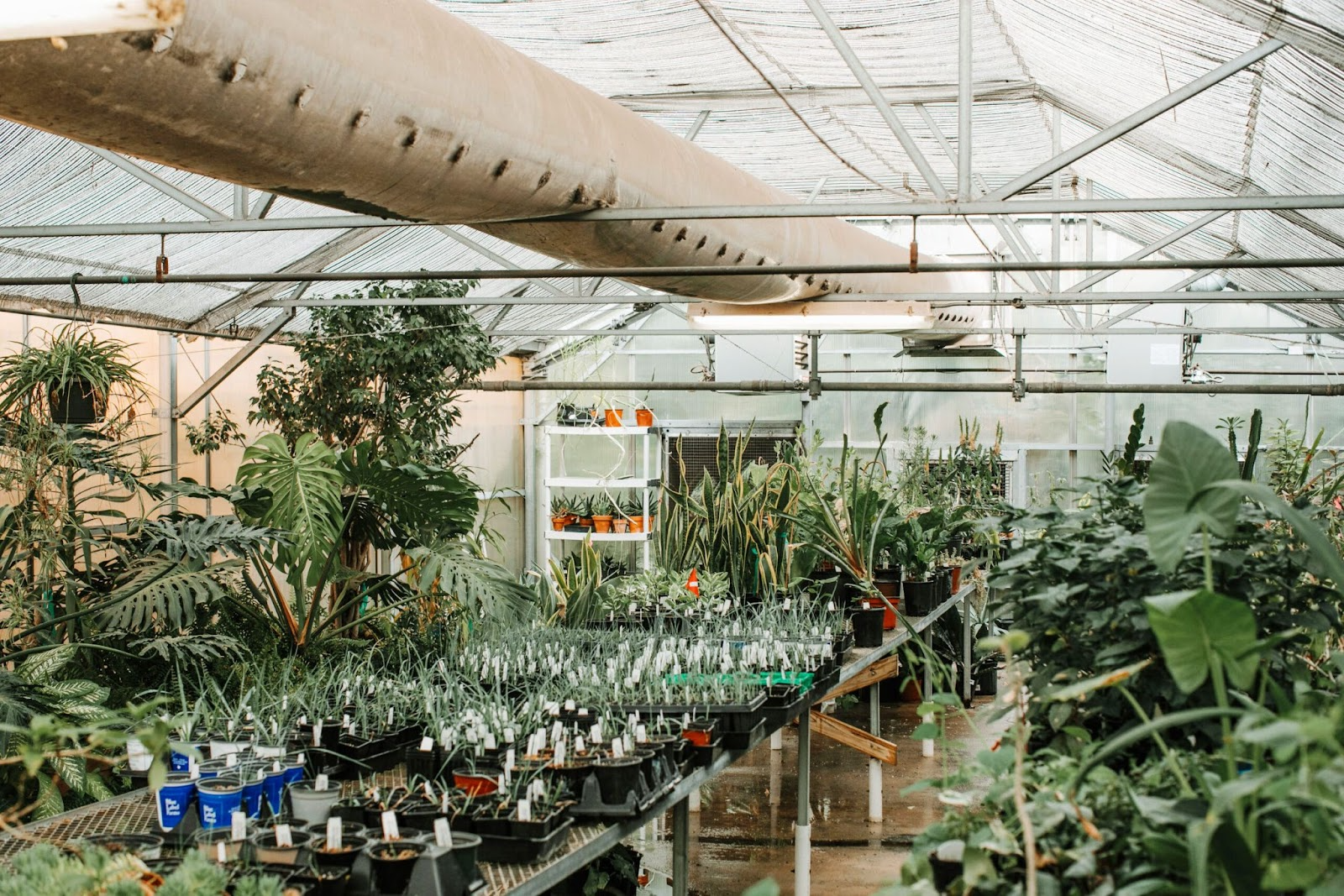
Greenhouse at TXDG | Photo courtesy of Texas Discovery Gardens
